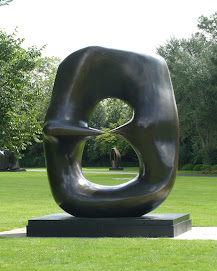
Posted 04.27.2009
In the computer science lab where they work at MIT, Erik and Martin Demaine have a three-foot-tall metal and plastic sculpture that resembles a sleek, modernist version of a child's Tinkertoy creation.
Erik, a math prodigy who was honored in Popular Science's second annual Brilliant 10, and his father Martin, an artist who was drawn into math through his son, built the piece by starting with a three-dimensional hexagon they folded from paper. They then inputted the shape into a computer and virtually erased all of the paper, so that only the creases remained. Next, they turned back to the tangible and created a dynamic piece of 
"We took something real and virtualized it, and then made it real again," explains Martin, 66, an MIT instructor and artist in residence.
They also took art, turned it into math and then back into art again. This belief that math and art are complementary endeavors is the key to the Demaines' work. The men use complex mathematics to create beautiful art, some of which is on display at the Museum of Modern Art in New York City. And they construct sculptures to help solve seemingly intractable math problems. Along the way, the lively and often goofy duo have inspired students to think more creatively about their discipline, and have shown the public that math doesn't have to feel inaccessible.
"We view them as very similar things," says Erik, a 28-year-old assistant professor, referring to math and art. "They're both creative processes. They're both about having the right idea."
Source:
http://www.popsci.com/scitech/article/2009-04/math-art-and-origami-mit




![Objet Mathematique [Mathematical object], 1934-36](https://blogger.googleusercontent.com/img/b/R29vZ2xl/AVvXsEjLj3RbKwEsBQ9_oXAT8tJF4nqp-uvyD5k1gCCLHBM_b-FZsKFEu5Noon_p_mT_vcKWjWmTGpiLj-nxAv1VZpI_ITC5X-Q51T9wXr-Uzpb3xBtMpY_E_FqpW0ard-_7d4BrcTkb-2ASQUM/s264/00objet_math.gif)

2 comments:
testing Open ID
Please discard this comment
Let’s explore the effects of repetition. Consider hundreds of cranes on a dish. http://219m219.wordpress.com/2009/08/31/practice-makes-perfect/ The multitude makes a qualitatively different aesthetic statement. These paper sculptures in essence are pieces executed in mixed media – the artist used origami and note paper often adorned with hand-made inc designs; he also repurposed book covers, magazine pages, flour bags, and such. Through the discipline of repetitive executions the artist manages to redeem the individual pattern, and then looses it in assemblage in the formula 1 is less than a multitude.
Revisiting the beloved theme is rather common in art. What difference does it make whether it happens consequentially or synchronically?
Japanese examples of Hokusai (Thirty-six Views of Mount Fuji - see Wkipeadia, also see his 100 series) and Hiroshige (Fifty Three Stations of the Tokaido (http://lcweb2.loc.gov/cgi-bin/query/r?pp/fsaall,brum,detr,swann,look,gottscho,pan,horyd,genthe,var,cai,cd,hh,yan,lomax,ils,prok,brhc,nclc,matpc,iucpub,tgmi,lamb,hec,krb,:@OR(@FIELD(AUTHOR+@3(+Ando,+Hiroshige,+1797+1858,+artist++))+@FIELD(OTHER+@3(+Ando,+Hiroshige,+1797+1858,+artist++))) reveal a cinematic approach to storytelling. The artists’ cumulative body of work ascertains flow. The continuum of versatile images testifies to the reverence on the part of the artists towards the complexity of the chosen subject that requires artistic diligence and serves as endless inspiration. Similarly, Ed Ruscha’s pilgrimages from LA to Oklahoma City resulted in Twentysix Gasoline Stations. Are the numbers in the series’ titles - 36, 100, 53, 26 – real facts tracking iterations of engagement with the subject? Are they symbolic indicators whose explanation should be sought in cultural codes?
Andy Warhol challenges the viewer with his synchronically serialized images. He multiplies focal points in portraying Marilyn Monroe, Mao Zedong, or Campbell Soup. This visual trick creates intensity. Would it be a stretch to think of the depictions in mathematical terms of raising the entity to the power of n?
Post a Comment